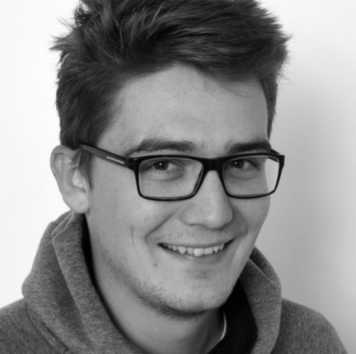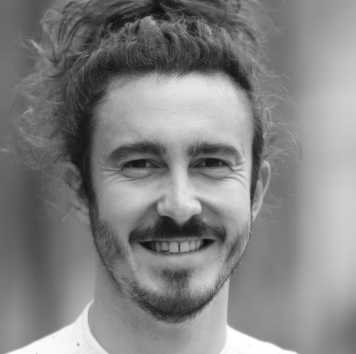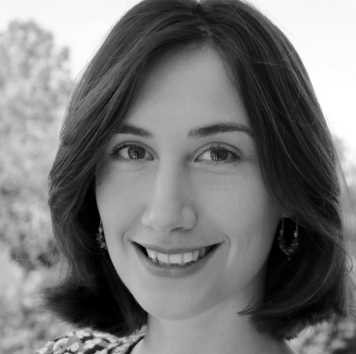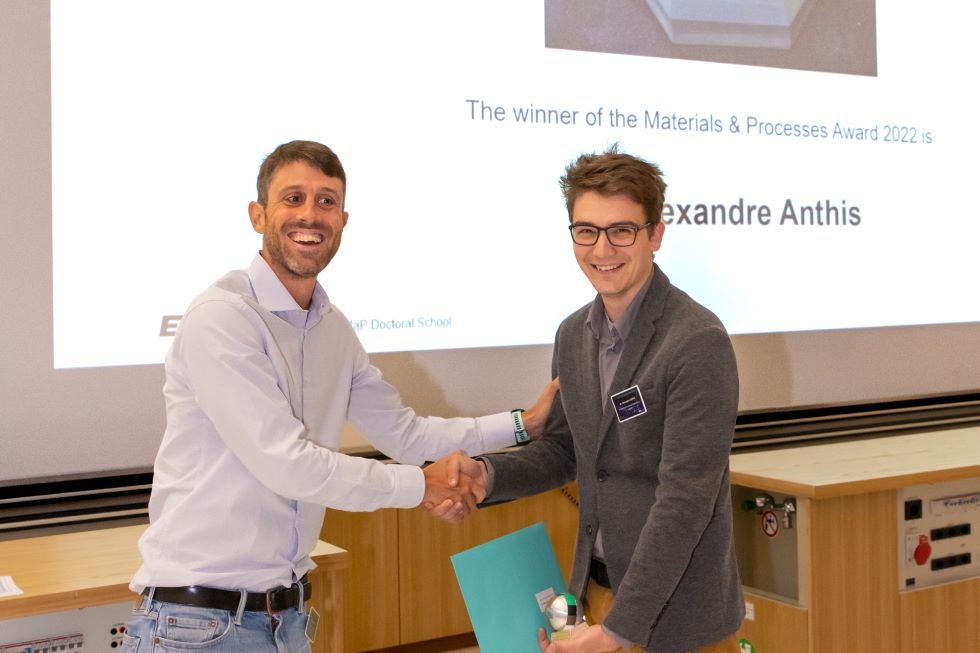MaP Award 2022
Every year the MaP Doctoral School awards a prize for the most promising doctoral thesis of ETH Zurich in the field of Materials and Processes.
Our sincere congratulations go to Dr. Alexandre Anthis for winning the MaP Award 2022! The prize recognises his impressive doctoral thesis on 'Design & Formulation of Stimuli-Responsive Surgical Materials'. In his work, Dr. Anthis spearheaded the development of smart sealant technology for the prevention, detection and treatment of intestinal anastomotic leaking, which is one of the most dreaded complications of abdominal surgery. Through detailed analysis of the medical need and the materials engineering toolbox, Dr. Anthis has designed a truly novel approach to tissue adhesion, which enables the anchoring of a sealant patch to tissue based on a mutually interpenetrating network. Dr. Anthis completed his doctoral degree under the supervision of Prof. Inge Herrmann in the Nanoparticle Systems Engineering Laboratory (D-MAVT & Empa). The technology Dr. Anthis developed is commercialised by the startup external page Veltist.
We would also like to acknowledge the two other MaP Award 2022 finalists, Dr. Tommaso Magrini (Complex Materials, D-MATL) and Dr. Nives Strkalj (Multifunctional Ferroic Materials, D-MATL) for their promising doctoral theses and their excellent presentations at the MaP Graduate Symposium 2022.
Find out more about the finalists in their portraits below. More information about the MaP Award.
Congratulations to all three MaP Award 2022 finalists!
Nominees for the MaP Award 2022
Design & Formulation of Stimuli-Responsive Surgical Materials

Short CV
Alexandre Anthis grew up on the island of Corfu in Greece. He studied chemistry at the University of Geneva (BSc, MSc). After a MSc thesis under the supervision of Prof. Harm-Anton Klok in EPF Lausanne, he started a doctorate at ETH Zürich & Empa in the Nanoparticle Systems Engineering Laboratory under the supervision of Prof. Inge Herrmann. During that time, he developed a novel surgical adhesives platform aimed at combatting surgical leaks. Now, as a Pioneer Fellow Dr. Anthis focuses on bringing this technology to market via his startup external page Veltist.
Your doctorate project in 2 sentences
In the search for high-performance adhesives, functional under the harsh digestive conditions of the abdominal tract, we developed a two-fold innovation in the form of a patch. This latter developed into a technology not only capable of sealing tissues but, for the first time, equipped with non-electronic sensing elements offering early detection of otherwise deadly surgical leaks.
Why did you choose this doctorate project?
Retrospectively and funnily enough, in the search for a doctoral project, I placed very specific requirements upon myself and the group I wanted to join. On top of all, I wanted to join a group where I could be productively creative and where the scientific problems I would be tackling, if solved, could provide tangible solutions. It turns out there was no better place than the NSEL group and the mentorship of Prof. Inge Herrmann, bringing together engineers, scientists and medical doctors all within a climate of constant strive for asking the most relevant questions.
Future Plans
I am presently working on translating the technology developed during my doctorate from the bench to the operating room. In the future, I hope I can keep on innovating forward, surrounded by great people sharing the vision of bringing smart surgical adhesives to life.
Tough & Transparent Nacre-Like Functional Composites

Short CV
Tommaso Magrini grew up in Italy. He obtained his BSc degree in Materials Engineering and Nanotechnology from Politecnico di Milano. He then pursued his MSc degree in Materials Science at ETH Zürich. After a visiting period at the Massachusetts Institute of Technology (MIT), he joined the Complex Materials group, led by Prof. André R. Studart, in the Department of Materials at ETH Zürich, where he carried out his doctoral degree in Materials Science. Currently, Dr. Magrini is a SNSF Postdoc Mobility fellow at the California Institute of Technology in the group of Prof. Chiara Daraio.
Your doctorate project in 2 sentences
Inspired by the hierarchical architecture of mother-of-pearl, we combined upcycled glass particles and commercially available polymers to form bulk bioinspired composites that display high strength and high resistance against fracture. Then, by engineering the polymer phase during synthesis, we were able to imbue these composites with novel optical functionalities, ranging from optical transparency to the capability of sensing and reporting fractures, thus enabling the early detection of damage.
Why did you choose this doctorate project?
After my MSc studies and the first experiences in academic research, I was determined to continue my formation with a doctorate in Materials Science. I aspired to be engaged with an application-oriented project, with the ambition of challenging real-world problems that we collectively face as a society. Furthermore, I was excited to learn new technical skills and broaden my competences to be able to grow as a scientist and as a professional. With this ambition, joining a team at the forefront of the multidisciplinary and growing field of bioinspired materials provided the perfect environment to enable this type of growth. While rethinking materials processing to solve the long-standing quest for strong, tough and transparent materials, I was able to develop key competences in polymers- and ceramic processing, as well as expand and strengthen my knowledge in the optics, mechanics and fracture of materials.
Future Plans
In my current postdoc work, I am exploring the use of novel reinforcing architectures to drive the transition towards more sustainable and more functional load-bearing materials. Taking inspiration from biological composites and learning from their growth in sustainable conditions, I aim at expanding the range of applications of bioinspired materials, with the ambition of providing the society with high-performance sustainable materials that are capable of serving multiple purposes.
Emergence & Evolution of Ferroelectricity in Oxide Heterostructures

Nives Strkalj was born in Croatia, where she obtained a MSc in Physics from the University of Zagreb. As a doctoral student in the Laboratory for Multifunctional Ferroic Materials led by Prof. Manfred Fiebig at ETH Zürich, together with Prof. Morgan Trassin, she pioneered studying polar order in thin films during synthesis. Today, Dr. Strkalj is exploring polarization-controlled memory devices as a SNSF postdoctoral research fellow in the group of Prof. Judith Driscoll at the University of Cambridge, UK.
Your doctorate project in 2 sentences
The functional property of an electronic device is commonly set already during its synthesis, but the investigation of the functional property typically occurs only after the synthesis. I co-developed the first tool that monitors a common functional property – polarization – during the synthesis, which allows for its better and faster optimization.
Why did you choose this doctorate project?
I am fascinated by the spontaneous formation of order in nature and how such order can be used for the technological advancements of our society. I was confident that combining exciting science of polar order with a clear device perspective of energy-efficient electronics is the right doctoral project for me.
Future Plans
I am on a mission to explore polarization-controlled memory devices towards superior performance. My near goal is to establish a research group studying the interplay of ferroelectric and semiconducting properties in oxide heterostructures. In the future, I envision launching some of the ideas and results from my group into patents and thus bringing oxide ferroelectrics into the mainstream of the electronics industry.
Previous MaP Award Finals
In 2022, the MaP Award was moved from the Competence Center of Materials and Processes (MaP) to the newly founded MaP Doctoral School.

